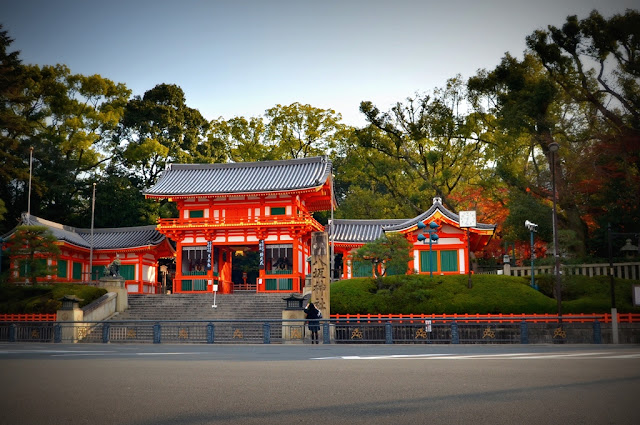 |
| Yasaka Jinja - Main Gate |
View Larger Map
The map above shows where was the first landmark I visited in Kyoto. It was going to be the first Shinto Shrine in Kyoto.
The first thing I wanted to do was to have breakfast. Yet, I wanted to try something different than onigiri (which by then had become sort of an addiction). I was hoping my friend was going to be hungry but later I realised that she doesn't normally have breakfast, and time passed by and we were there in the first shrine. It was also going to be the first time that my friend explained to me the proper Shinto etiquette when entering and leaving a shrine.
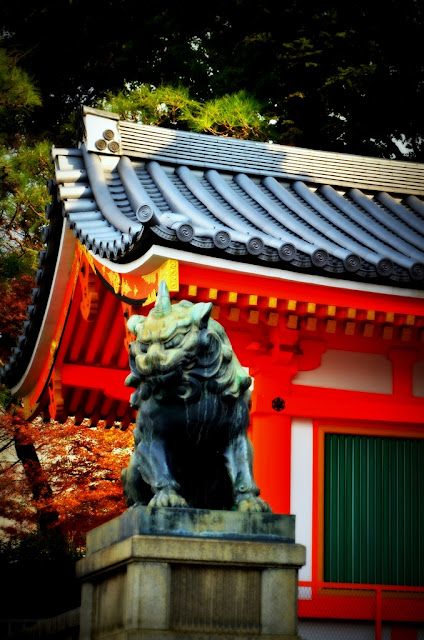 |
| Komainu - Yasaka Jinja |
In the end, I didn't have breakfast that day but it was ok. I love having breakfast but as they say "what doesn't kill you makes you stronger (or in this case hungrier)". Instead I was hoping for a big lunch ^_^
I realised a bit later that Japanese people have different eating habits than me (and perhaps you too). I normally have a massive breakfast and it can last up to 1 hour and 15 minutes. That's crazy I know. It's quite a lot of time but that's because I don't normally have dinner. Japanese people, on the other hand, do the opposite, no breakfast but big dinner. It's more of a social event.
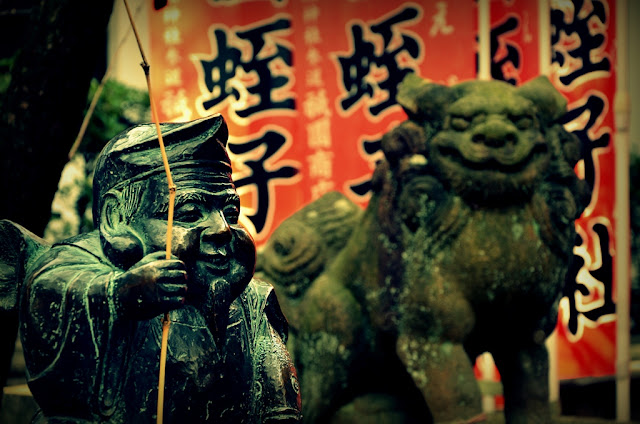 |
| Yebisu & Komainu - Yasaka Jinja |
Next stop was Yasaka Jinja shrine which was very beautiful. It was at this point of my trip that my views from a spiritual point of view started to change. Before I came to Japan I had read sites about Shintoism but nothing can prepare you for the experience of actually visiting a Shinto shrine for the first time. I'm not a very religious person myself but when I got inside the shrine something beyond my understanding moved me. I think it is because of the beauty around the Shrine. The combination of vermilion colour, the green of the trees and the stone lamps match perfectly.
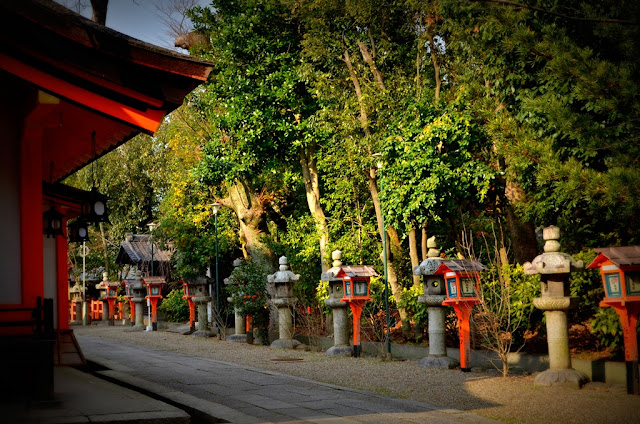 |
| Yasaka Jinja - Lamps |
The good thing is that my friend is Shintoist and taught me little by little how to do things properly: when to bow, what to say when you bow, how to purify yourself before getting inside the the shrine, not to take pictures when you're in front of the god as a symbol of respect, how to put the coin ( offering) to the god(s) and how to leave the shrine when passing across the torii.
After this shrine we went for lunch and I had tempura shrimps and udon. According to my friend it was not too good. However, in my humble opinion it was delicious - I guess I'm used to Western Japanese food and not quality food. As a result, even kombi ( 7 eleven, Family mart, Lawson ) food tastes delicious. I'm quite sure my Japanese friends might be shocked after reading that but it's true.
 |
| Rice - Tempura Shrimp - Udon |
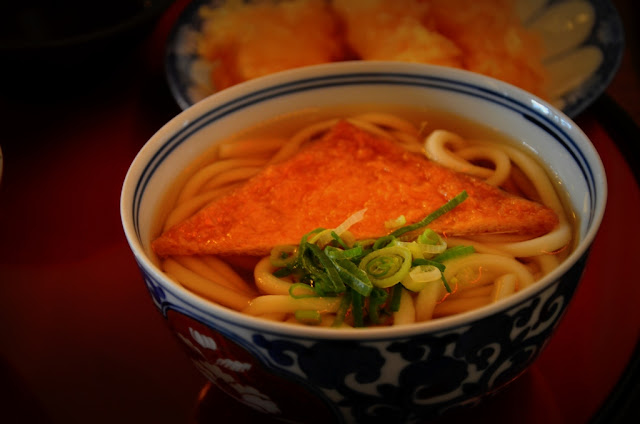 |
| Udon in Kyoto |
After lunch, we walked a bit to get to the bus stop. I recommend you to get a day or two days travel pass for bus line it's cheap and you can go anywhere you want. The Kyoto metro is not that amazing and if you want to really discover the city I highly recommend you to avoid using the metro but that's up to you.
So we got off nearby the next Shrine we where going to visit. What I saw till then it was completely different from Ōsaka. The atmosphere was more relaxed, not so many high buildings, and yes plenty of shrines wherever you would go.
People were more relaxed and slow doing things. I realised that the moment we were having lunch but it turned out to be the way Kyoto people are. It's worth mentioning that people in Kyoto are very polite and educate. They're equally happy as in Osaka but they seemed to be more educated when attending the customers and even among themselves.
The next landmark was the Heian Jingu Shrine, built in 1895 to commemorate the 1100th foundation of Heian Capital and to praise the virtues of Emperor Kammu, who was also considered a god.
View Larger Map
 |
| Heian Jingu - Lamp at Main Gate |
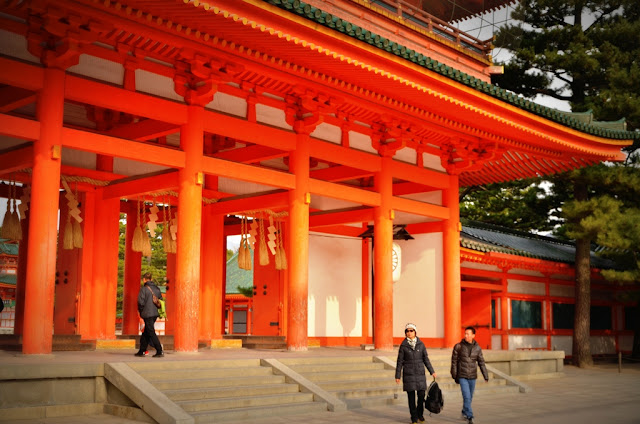 |
| Heian Jingu Main Gate Shimenawa |
 |
| Heian Jingu - Omikuji |
The Heian Jingu is a shinto shrine but has something that others do not have, a garden. The Heian Jingu Garden is beautiful at any time of the year. I was also lucky since the winter season had not started. Some trees had lost its leaves but most of the scenery was very green.
After spending some time by the pond taking pictures of beautiful trees and birds my friend told me that in this garden you could see the very first tram in Japan . This tram was used for the first time in 1895 by the Kyoto Electric Tram.
 |
| Oldest tram in Japan |
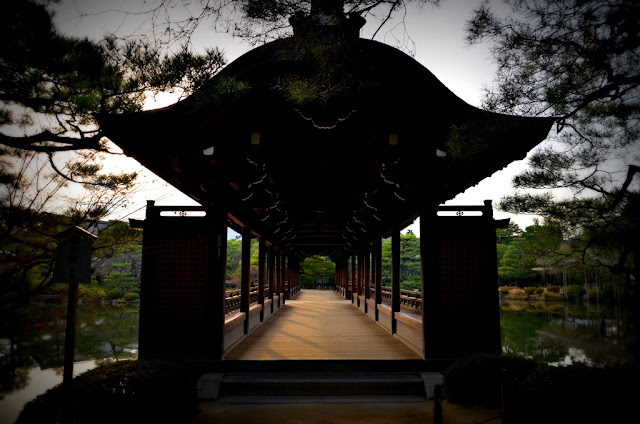 |
| Wooden cross on the Heian Jingu lake |
Moving on, we were now heading to another great place and that would take us all the way through a very typical Kyoto old-Japanese-style street called Matsubara-Dori. However, before that we needed to catch a bus and it was on the way to the bus stop that I decided to stop for a second and admire how big the Heian Jingu Torii is (actually it's the biggest on earth).
Later on, we decided to go to our next place and that would take us to one of the most important places for tourists in Kyoto, Matsubara-Dori is a typical old-style Japanese narrow street with lots of shops. This street ends opposite the Kiyomizu-Dera Buddhist Temple entrance which was our next stop.
I was stuffed, I seriously was not hungry but all of a sudden this amazing tasty smell stroke me. My friend suggested that I should have one and so I did. That bun filled with minced beef was amazing. You could tell it was fresh and not microwaved or reheated.
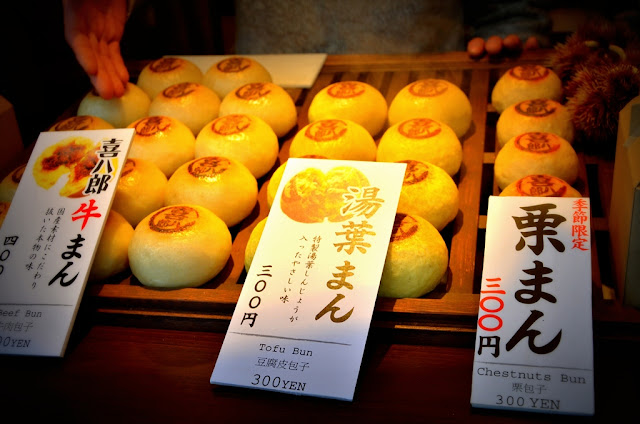 |
| Manju buns - Kyoto - Matsudara- Dori |
The temple is very interesting because well it was my first Buddhist temple and it also showed me another face of the religion in Japan. So far I can't really tell which gathers more people and to be honest who of them really believes and goes there to pray. However, that was not the purpose of my trip and at that point both shrine and temple offered something beautiful, unique and spiritual that was new to me.
View Larger Map
 |
| Kimono Girls - Matsubara-Dori |
Within the Buddhist temple there is a Shinto shrine for the god of love and of course a lot of young girls were visiting it. Funny thing was when I saw two rocks and two girls started laughing. I didn't know what was going on but one rushed to the farthest stone and the other remained there but closed her eyes. Then she walked with her eyes closed. She walked it all the way from one stone to the other one where her friend was waiting for her. The belief goes that if the girl can get to the rock blindfolded without any problem her love life will be without obstacles.
The whole temple is very big and you can see this old building made out of timber darkened thorough the years, due to dust, rain, fires and snow. Still the building has a cosy and sacred feeling.
When you go down the hill and about to leave the temple you see the dragon fountain and a very long queue. The purpose of the fountain is to drink the water and purify your soul.
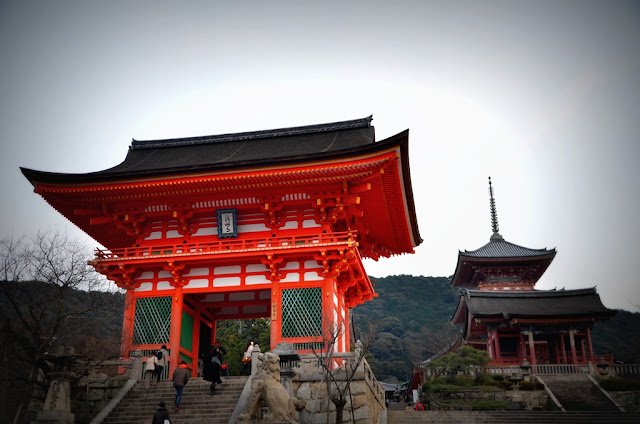 |
| Entrance to Kiyomizu-Dera |
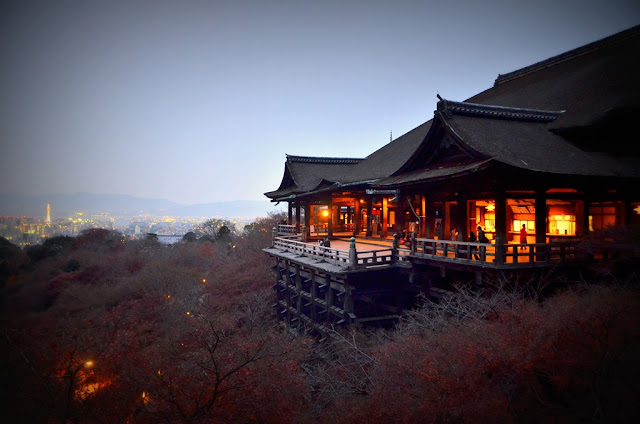 |
| View of Kyoto from the Kiyomizu-Dera |
 |
| Jishu-jinja - Shrine of the God of Love and Good Matches |
By the time we were back all shops were closing and there was pretty much nothing to see or buy - yeah lucky me. But it was about time to eat and my friend knew a place with great food. So we went there and enjoy a mix of sea food and tempura with a great miso soup and tofu. Apparently you can get good tofu in Japan but Kyoto is particularly well known for the tofu quality.
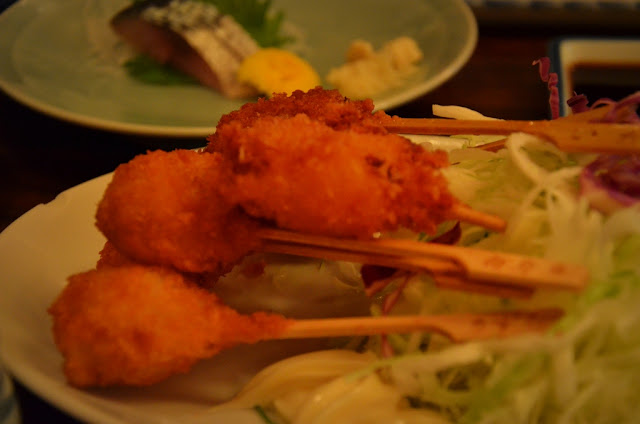 |
| Deep fried sticks of Tofu, Potato, Octopus, Shrimp |
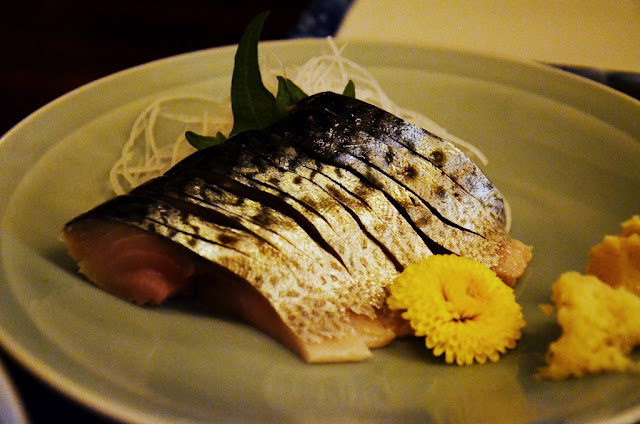 |
| Sashimi in Kyoto |
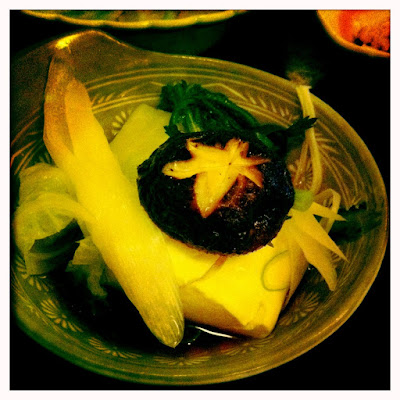 |
| Tofu - mushrooms and in soy sauce soup |
 |
| Squid, fish, potato, shrimp deep fried stick |
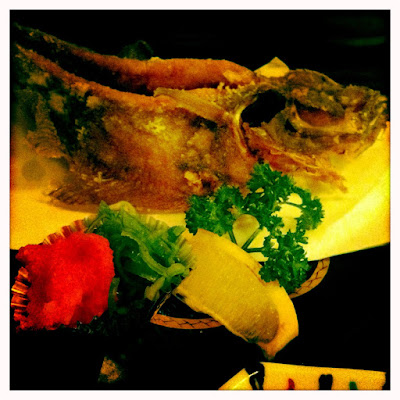 |
| battered fish Kyoto Style |
 |
| Rice |
 |
| cooked vegetables |
 |
| Each wooden stick has the name of what it is your eating |
 |
| extremely thin slices of fish |
 |
| tuna |
 |
| very tasty vegetable which name I can't remember |
We were walking the whole day and we were quite tired so went back to the hotel and got some sleep. A new day would bring new and great experiences. Kyoto Imperial Palace here I come. However, there's always time for mochi-rice filled with anko (餡子) and green tea before going to sleep ^_^
 |
| Green tea and mochi filled with sweet red beans paste ( 餡子 anko) |
 |
| simplicity |
No comments:
Post a Comment